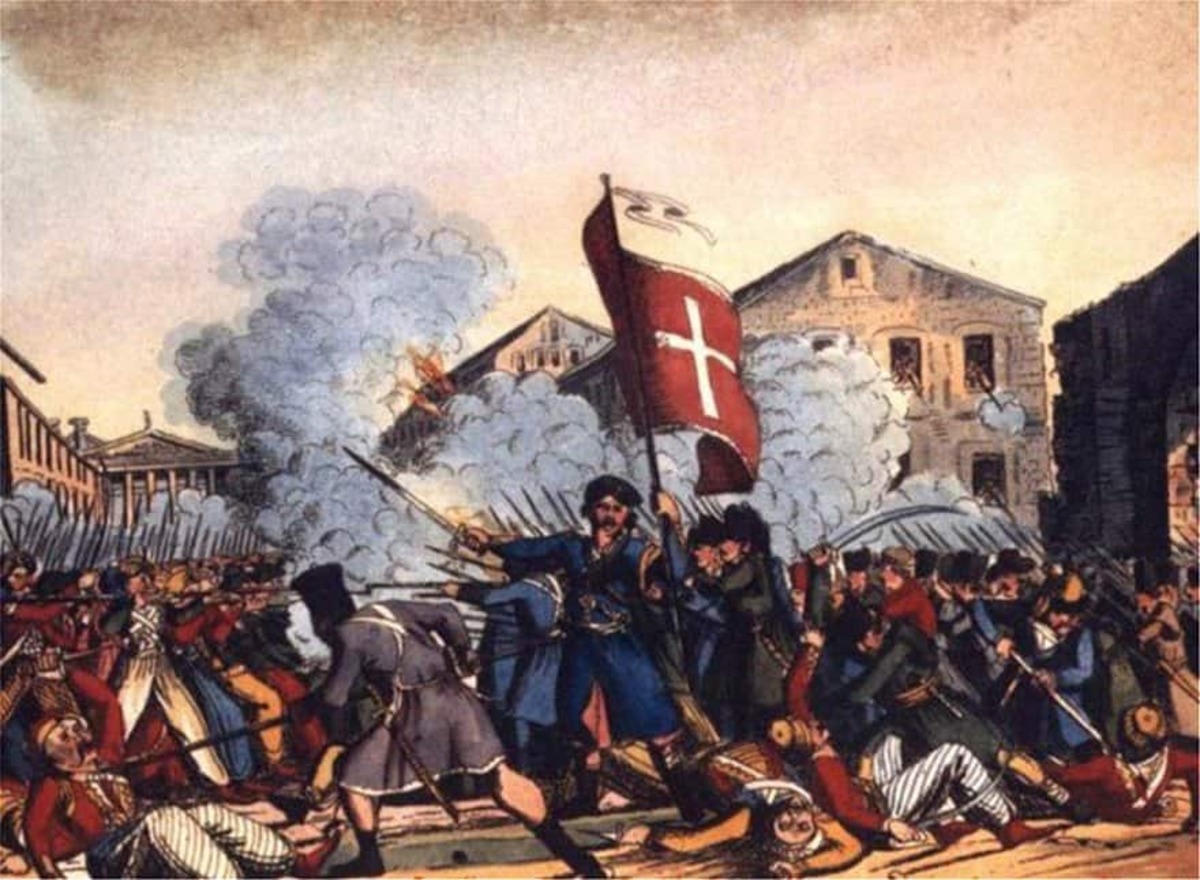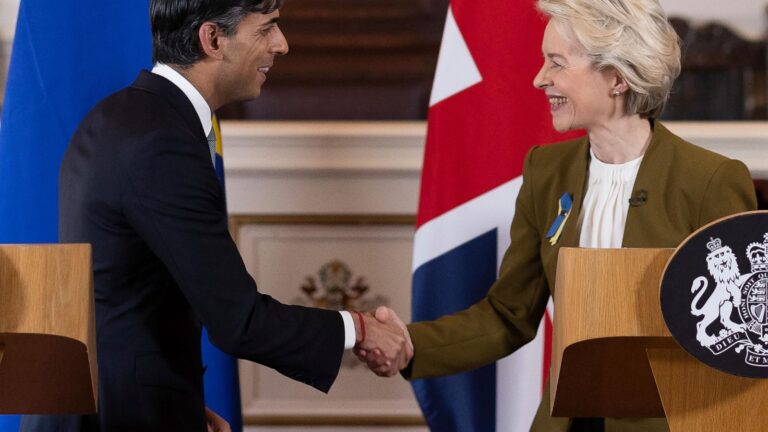The siege of Tripolitsa, Greece (today’s city of Tripolis) was a pivotal moment in the Greek War of Independence, and it remains a point of contention between Greeks and Turks, as reflected in the way it is portrayed by their respective historians.
It took place on September 23 1821.
The siege (and the ensuing massacre) was an early victory for the Greeks, just six months after the declaration of the War of Independence in March 1821, but it also became notorious for the atrocities against the Muslim inhabitants of the city and the Jews who entered the city, terrified by the wrath of the Greek rebels after the siege.
As historian of the War W. Alison Phillips noted, “the other atrocities of Greeks paled before the awful scenes which followed the storming of Tripolitsa.” In the three days following the capture of the city, Muslim and Jewish inhabitants of Tripolitsa were exterminated. The total number of Muslims killed during the sacking was estimated by Thomas Gordon, who arrived in the city shortly after its fall, at eight thousand.
Beyond the 2,500 Albanian troops vouched for in advance, only a tiny contingent of Turkish cavalry escaped to Nauplion, along with a few women who were taken as slaves, the harem of Hurshid Pasha, and a few notable Turks who were held for ransom and were spared. There were about one hundred foreign officers present at the scenes of atrocities and looting committed in Tripolitsa.
Situated in the middle of the Peloponnesian peninsula, Tripolitsa was the preeminent town in southern Greece, as well as the administrative center for Ottoman rule in the Peloponnese, thus making it an important target for the Greek revolutionaries.
Many rich Turks and Jews lived there, together with Ottoman refugees driven there by the outbreak of the revolt, escaping massacres in the country’s southern districts.
Unfortunately for them, this spelled disaster after the Greek rebels finally took control of the city.
Ottoman massacres before Tripolitsa in the Greek War of Independence
It was also a potent symbol for revenge, its Greek population having been massacred by the Ottoman forces in the past. The most recent of such events had occurred just a few months earlier, following the failed rebellion at Moldavia in early 1821.
Previous massacres of the town’s Greeks occurred in 1715 (during the Ottoman reconquest of the Morea) and on Holy Monday, March 29, 1770, after the failed Orlov Revolt.
The de facto commander in chief of the Greek forces, Theodoros Kolokotronis, now focused on the capital of the province. He set up fortified camps in the surrounding area, establishing several headquarters under the command of his captain Anagnostaras in the nearby villages.
In addition, fresh forces of Maniot troops under Petros Mavromichalis, the Bey of Mani, arrived and camped at Valtetsi to prepare to part in the final assault on the Ottoman capital of Morea. The Turko-Albanian garrison was reinforced in May by some troops and cavalry sent by Hursid Pasha from the north, led by the Kehayabey Mustafa.
The rebels’ decisive victory in the Battle of Valtetsi and several other victorious clashes in Doliana and Vervaina, meant that the Greek revolutionaries had effective control over the majority of the areas in the Central and Southern Peloponnese.
The Tripolitsa Battle and the Ensuing Massacre
Although the siege of the city had been ongoing for several months, its progress was slow, as the Greeks were unable to maintain a tight blockade and were often scattered by Turkish cavalry.
However, conditions were worsening inside the walls due to the scarcity of food and potable water. Taking advantage of this, Kolokotronis began quiet negotiations with the leaders of the besieged, aiming at an orderly capitulation.
He wisely convinced the Albanian contingent, led by Elmas Bey, to make a separate agreement for safe passage to Argos, thereby greatly reducing the strength of the defenders. The deal itself was guaranteed by Dimitrios Plapoutas, the renowned Koliopoulos. The city was taken before the 2,500 Albanians had departed, but still, they had a safe passage out of the Peloponnese a few days after the fall.
The massacre that followed throughout the following three days (Friday through Sunday) resulted in the death of between six thousand and fifteen thousand Turks and Jews who lived in Tripolitsa.
Eyewitness and Historians’ Accounts of Tripolitsa as part of the Greek War of Independence
According to the account of William St. Clair, one of the foreign officers present in the siege, “Upwards of ten thousand Turks were put to death. Prisoners who were suspected of having concealed their money were tortured.”
“Their arms and legs were cut off and they were slowly roasted over fires,” he wrote. “Pregnant women were cut open, their heads cut off, and dogs’ heads stuck between their legs. From Friday to Sunday, the air was filled with the sound of screams…One Greek boasted that he personally killed ninety people. The Jewish colony was systematically tortured.”
“For weeks afterward, starving Turkish children running helplessly about the ruins were being cut down and shot at by exultant Greeks…The wells were poisoned by the bodies that had been thrown in,” William St. Clair wrote.
The massacre at Tripolitsa was the final and largest in a sequence of massacres against Muslims in the Peloponnese during the first months of the revolt. Historians estimate that upwards of twenty thousand Muslim men, women, and children were killed during this time, often by the exhortations of the local clergy.
Historians believe that although the Jews were murdered, they were not targeted specifically, but they also weren’t distinguished from the Ottomans, as the wrath of the rebels was uncontrollable.
The commander in chief of the Greek rebels, Theodoros Kolokotronis, confirms both the eyewitnesses and later historians concerning the massacre. He writes in his memoirs: “Inside the town they had begun to massacre…I rushed to the palace…’If you wish to hurt these Albanians,’ I cried, ‘kill me rather; for, while I am a living man, whoever first makes the attempt, him will I kill the first.’”
“I was faithful to my word of honor…Tripolitsa was three miles in circumference,” it was said. “The [Greek] host which entered it, cut down and…[slaid] men, women, and children from Friday till Sunday. Thirty-two thousand were reported to have been slain. One Hydriot [boasted that he had] killed ninety. About a hundred Greeks were killed, but the end came [thus]: a proclamation was issued that the slaughter must cease.”
The capture of the city of Tripolis inarguably had a salutary effect on the morale of the revolutionaries. After this event, Greeks saw that their way toward victory was possible with the entire Peloponnese now bearing hardly any trace of Ottomans.
On the other hand, it also marked the first strong point of discord in a previously apparently cohesive force since the atrocities committed during the siege were at the time deplored and criticized by some Phanariot figures of the Greek War of Independence, such as Dimitrios Ypsilantis and Alexandros Mavrokordatos.
Source: Greek Reporter







